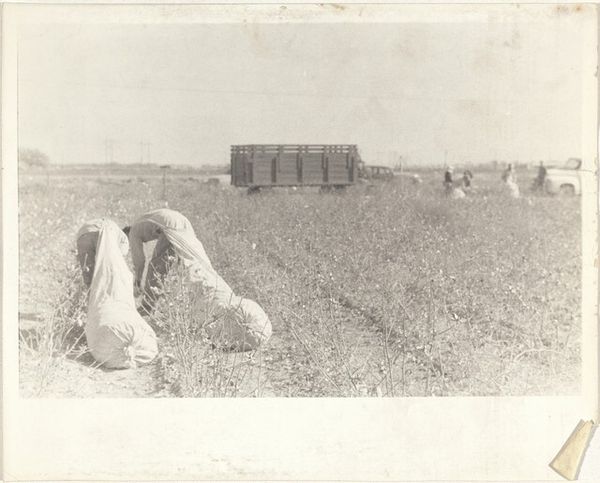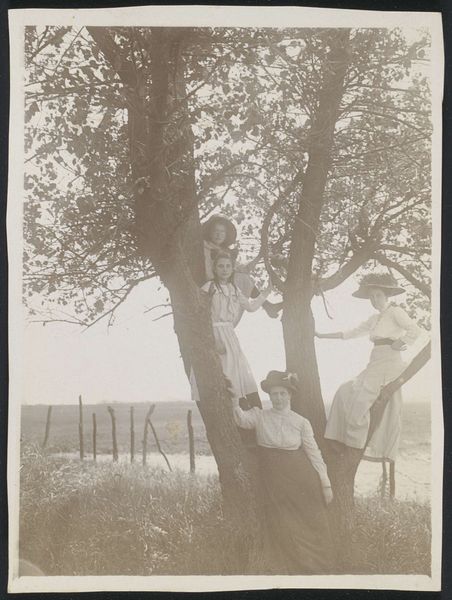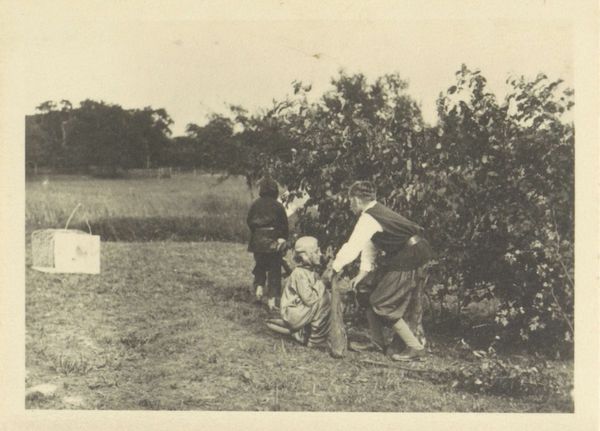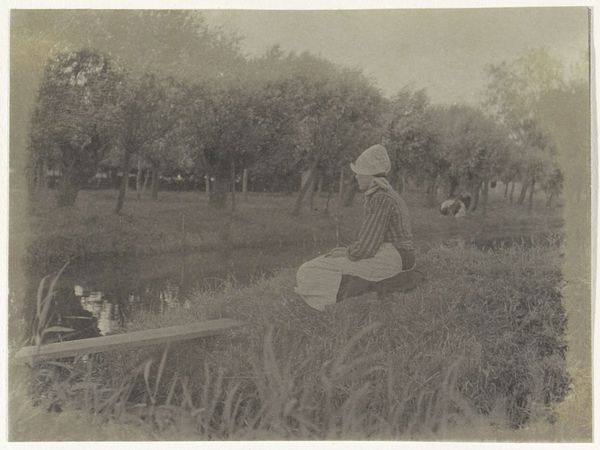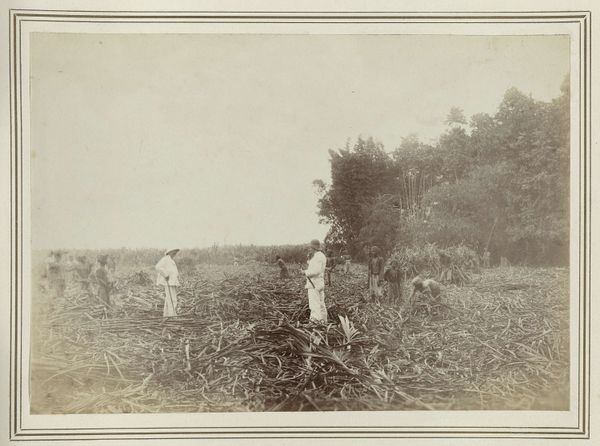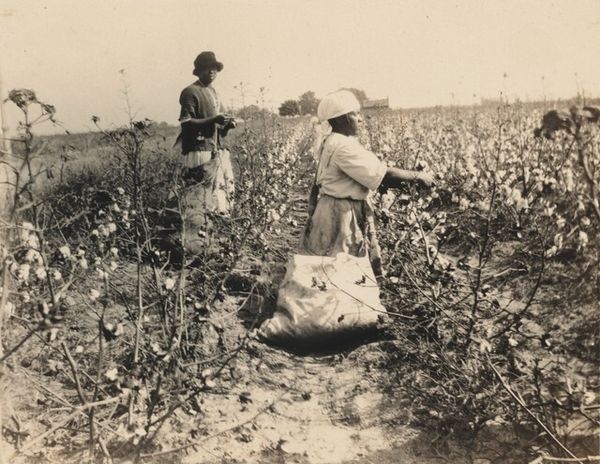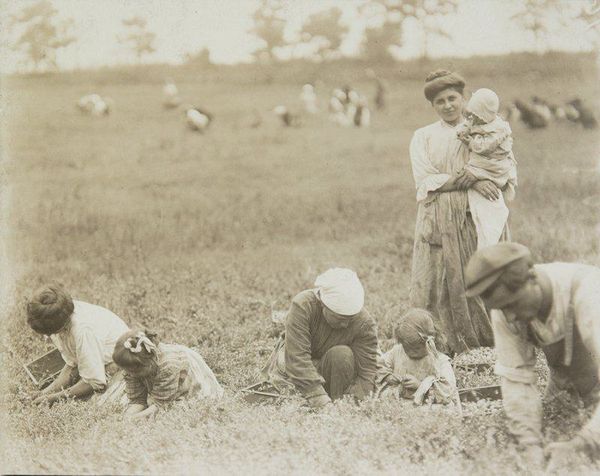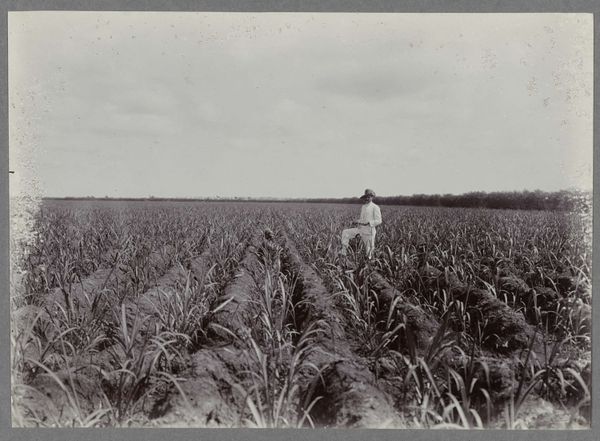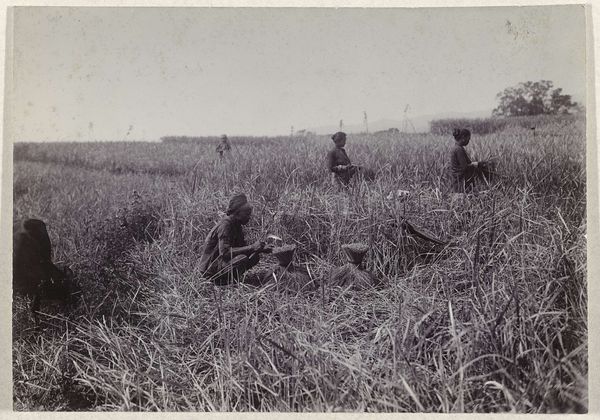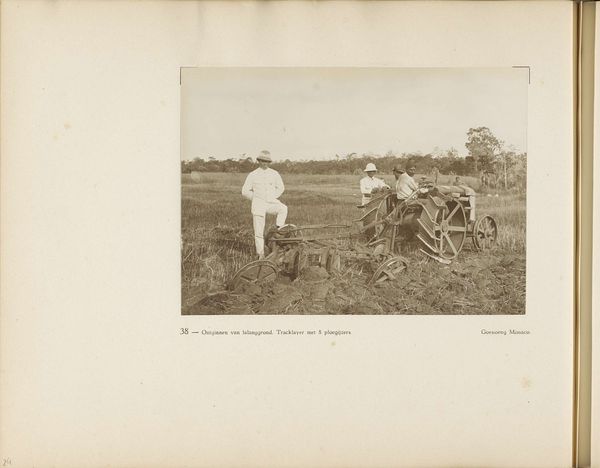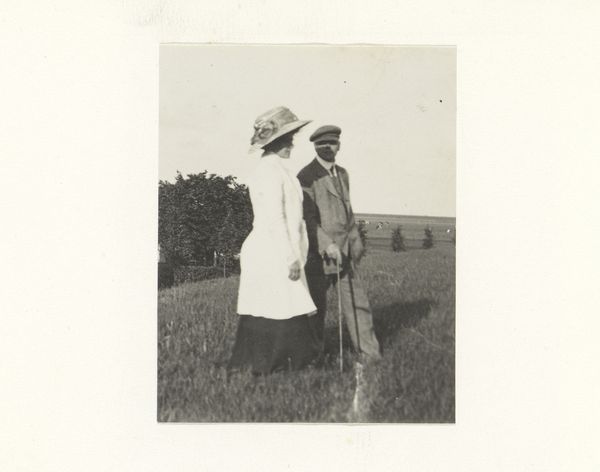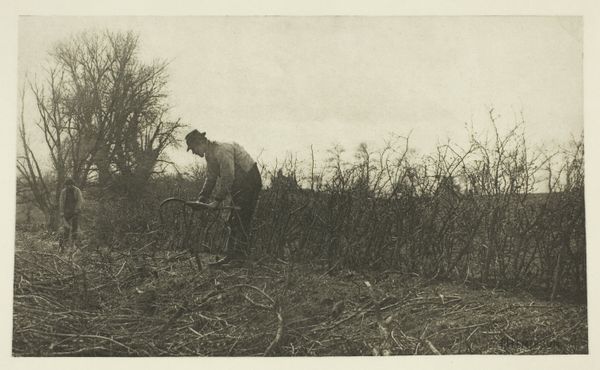
Dimensions: 4 13/16 x 6 3/4 in. (12.22 x 17.15 cm) (image)4 15/16 x 6 15/16 in. (12.54 x 17.62 cm) (sheet)
Copyright: No Copyright - United States
Curator: This gelatin silver print, "Picking Cotton," was created by Lewis Hine in 1913 and is held here at the Minneapolis Institute of Art. It depicts two figures bent over in what appears to be a vast field. Editor: My first impression is the overwhelming sense of drudgery and the almost complete absence of joy or vitality. The limited tonal range compresses the space, furthering that feeling. Curator: It's interesting how the lack of crisp detail and muted tones lend an almost timeless quality to the scene. The artist isn't focused on sharp lines or stark contrasts, it's more about atmosphere. I’d argue this isn't purely documentary. Editor: Indeed, consider the symbols involved. Cotton itself has always held very specific cultural and psychological baggage here in the US. It represents forced labor, economic disparity, and a brutal history that lingers even now. These figures bowed down… it powerfully recalls generational trauma. Curator: It is striking how their postures mimic the cotton plants, becoming another feature within this vast landscape of labour. Observe the delicate balance the photographer maintains; how he draws our eye, using a low vantage, to these bent forms amid the boundless field. It creates tension within the plane, drawing us to the social realities Hine sought to portray. Editor: Exactly. It makes you wonder about the lives these individuals lead. Hine often used his photography to advocate for social reform, to call attention to injustices that were, perhaps, easy for some to ignore. He infuses even a simple landscape with loaded historical symbols. Curator: He certainly pushes the pictorial surface to convey more than a fleeting moment. The work seems constructed to evoke a lingering feeling of systemic inequality. The subdued nature adds to that weightiness, resisting quick consumption. Editor: A seemingly simple image, a record of a specific time and place, yet filled with so much resonance for how symbols inform cultural memory. Thank you. Curator: Yes, thank you. Delving into the intrinsic aspects certainly helps bring this layered composition into sharper focus.
Comments
minneapolisinstituteofart almost 2 years ago
⋮
Lewis Hine was a documentary photographer, educator, and social reformer. Trained in sociology, Hine taught at the progressive Ethical Culture School in New York City before turning his attention to photography. As a photographer for the National Child Labor Committee (NCLC), Hine traveled the United States to document children in unsafe working conditions in factories, mines, fields, and city streets. Over ten years, he created an indelible record of the human cost of an exploitative labor market, documenting the tired faces of children at the end of their shifts, or even children mutilated by industrial machinery. These disturbing photographs were used in publications and presentations created by Hine and the NCLC, and ultimately promoted sweeping policy changes designed to protect children.
Join the conversation
Join millions of artists and users on Artera today and experience the ultimate creative platform.
